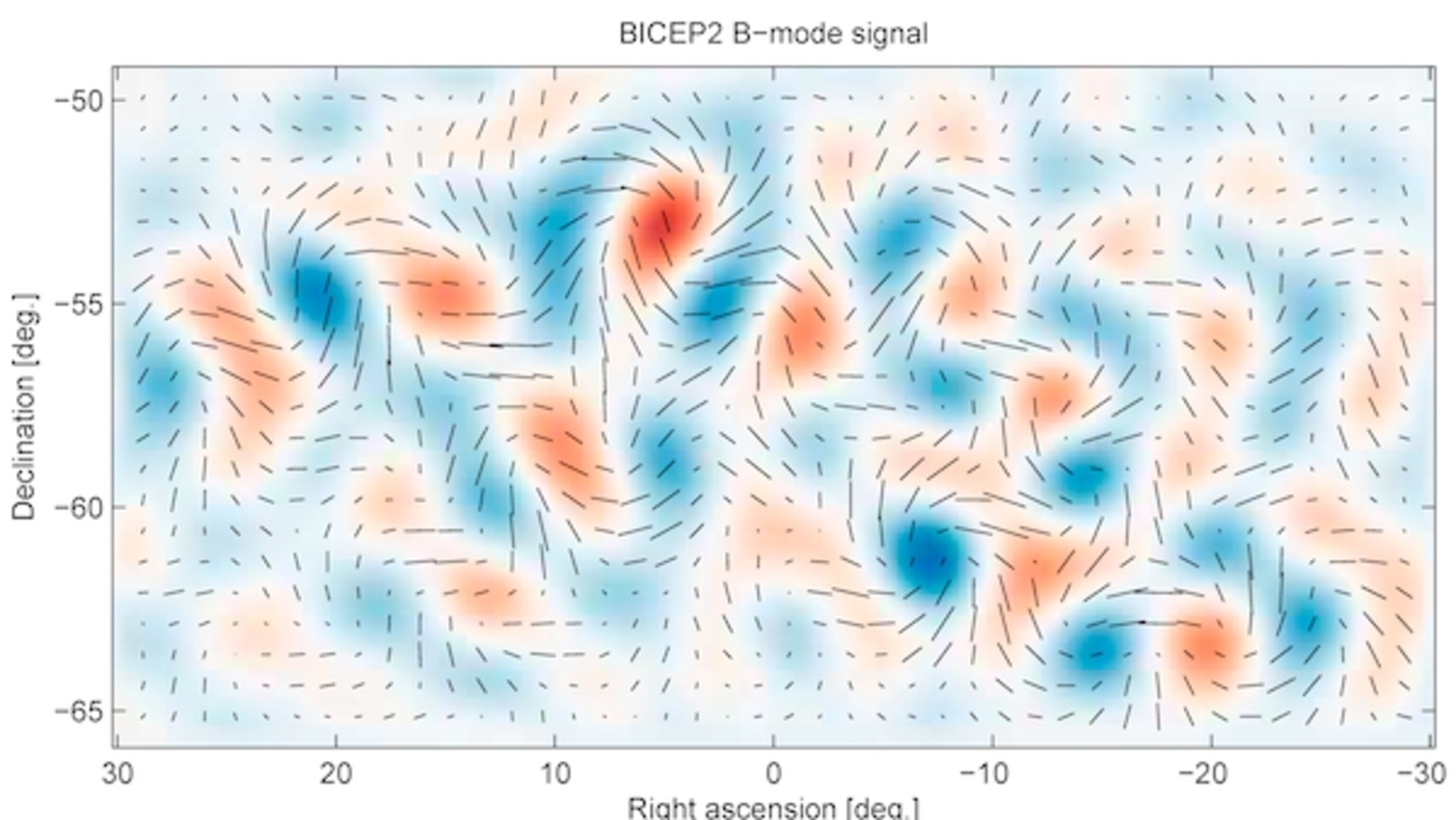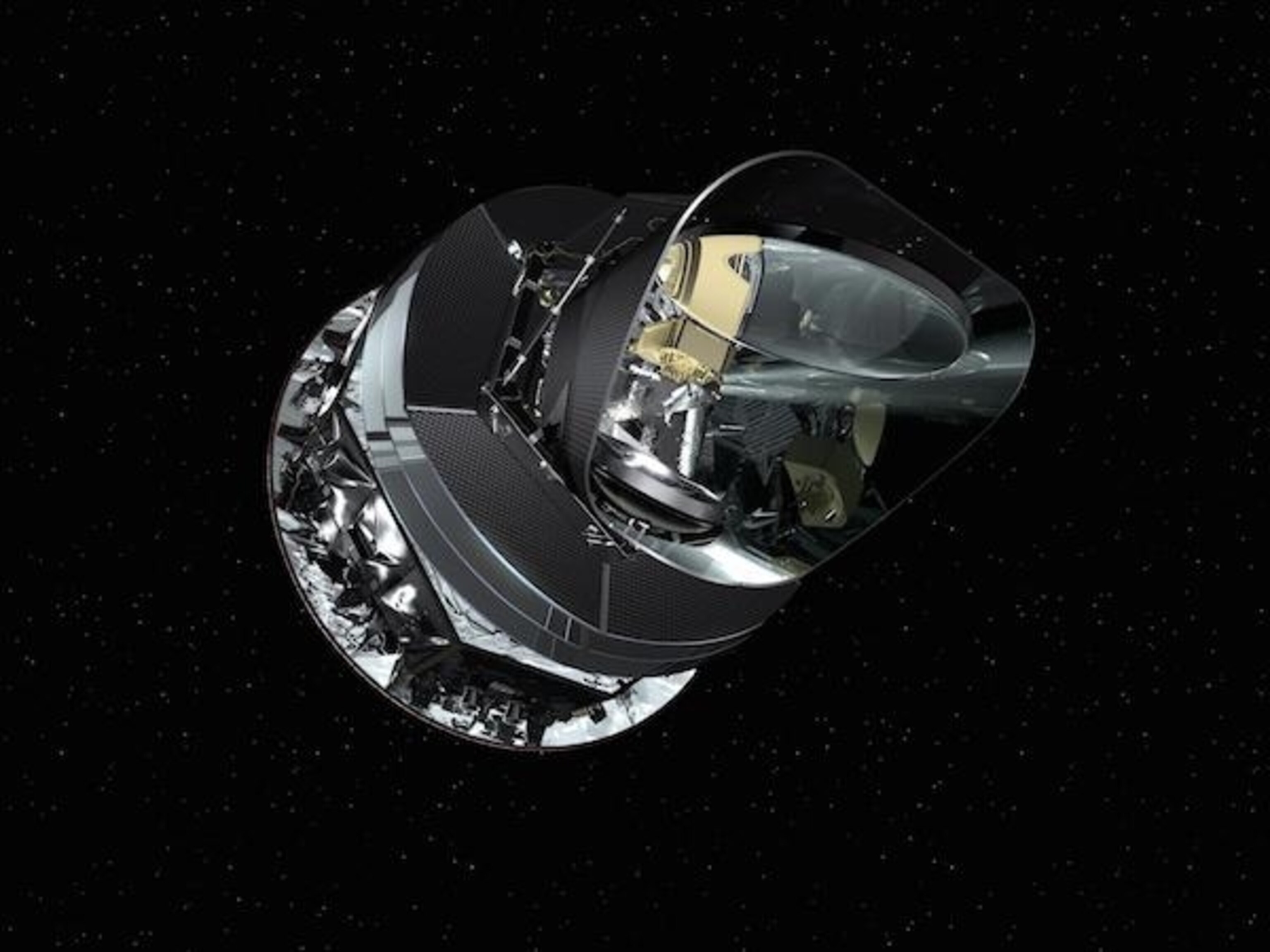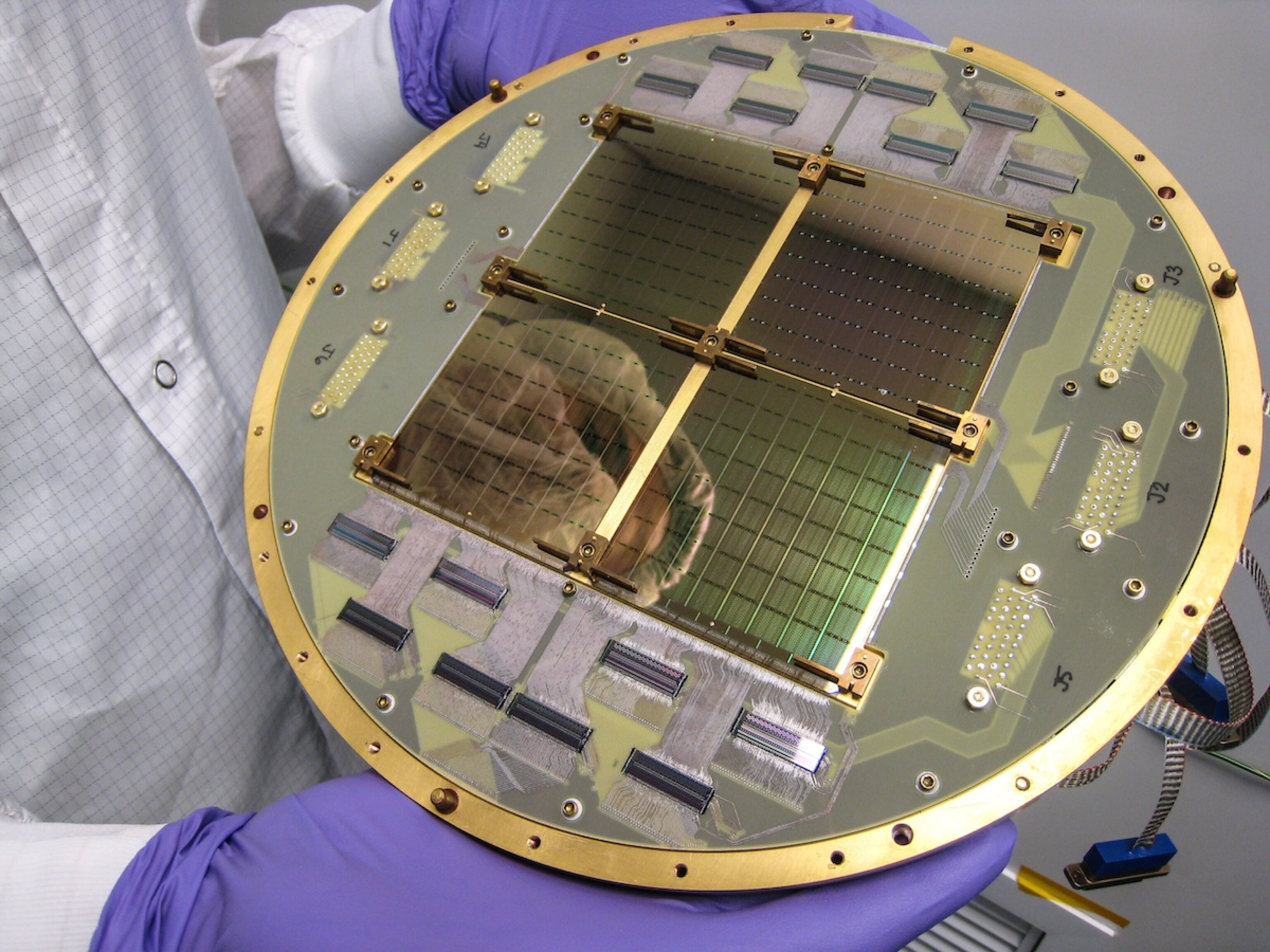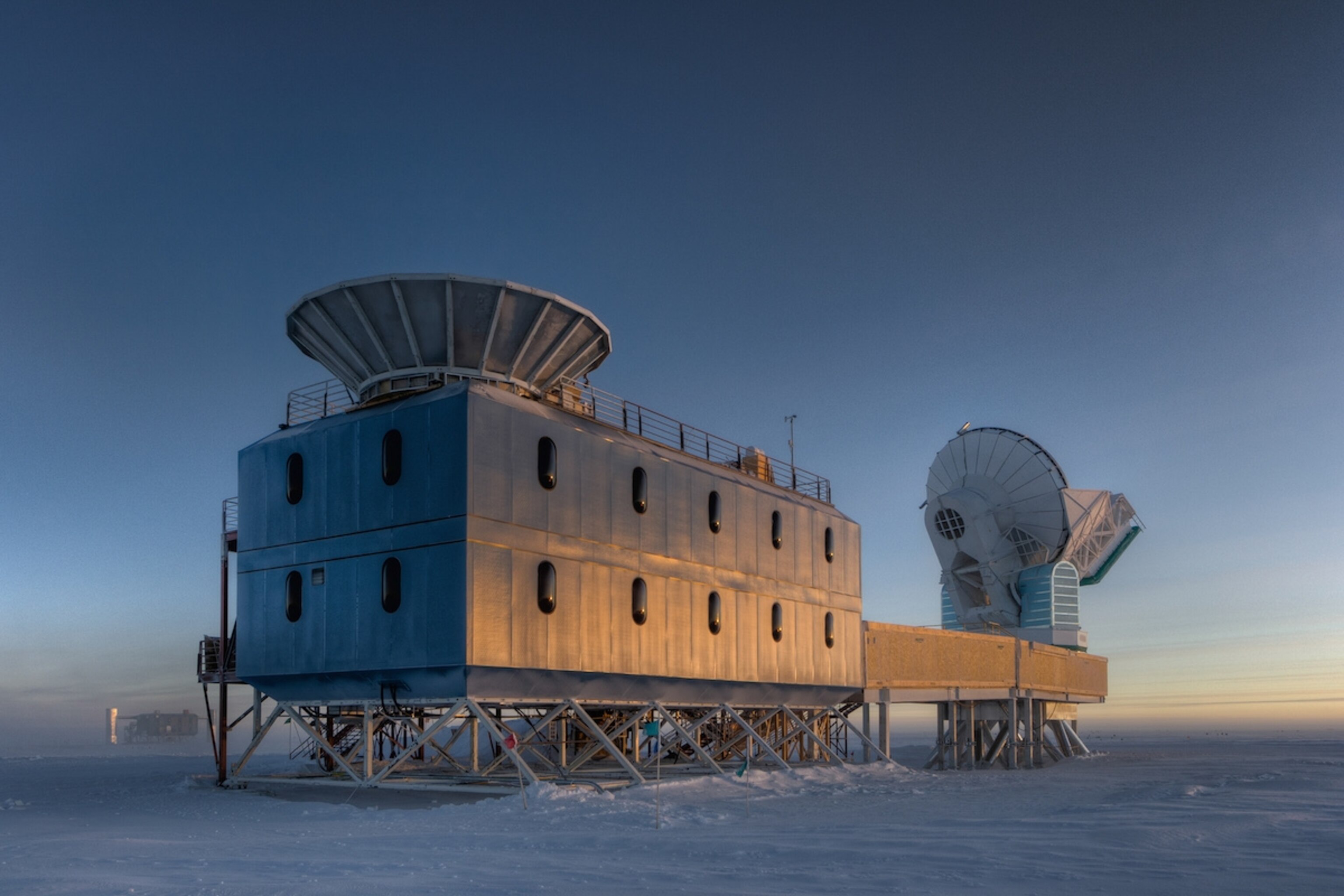
How Will Science Confirm Those Cosmic Signals From the Infant Universe?
Announced on Monday, the detection of primordial gravitational waves – ripples in the fabric of the universe that tell us about the first trillionth of a trillionth of a trillionth of a second after the Big Bang – is already one of the biggest science discoveries of the year. In fact, it’s hard to think of something that can realistically top that.
That statement might sound a little hyperbolic, but it isn’t. Many cosmological ideas depend on the events in those very first, violent instants. Until now, we haven’t had much direct observational evidence pointing toward one theory or another.
“Most signs of what happened back then get obliterated,” says MIT physicist Frank Wilczek. “But gravitational waves interact so weakly with everything else that they propagate, they give us a record. What the team is seeing, or claims to be seeing, is the imprint of gravitational waves on the microwave background.”
A team using the BICEP2 detector at the South Pole found the waves’ imprints in the thermal radiation that’s left over from the Big Bang. Called the cosmic microwave background, this radiation forms the fabric that primordial gravitational waves press their fingerprints into, leaving swirly signatures that scientists call B-mode polarizations.

These signatures are predicted by a theory known as cosmological inflation, proposed in 1980.
Inflation suggests that the universe we observe today – flat, smooth, relatively uniform – is the result of an unbelievably rapid and accelerating expansion that lasted for a fraction of a second after the Big Bang. Just how fast was it? Wilczek calculates that the acceleration of the expansion was somewhere in the neighborhood of 1048 centimeters/second2 – a number so big it’s basically impossible to comprehend. (Appropriately, inflation theory is connected to one of everyone’s favorite mind-boggling outcomes: The multiverse.)
The gravitational wave discovery has been described in news stories this week as “The Big One,” “a window back to almost the beginning of time,” “as big as it gets,” “worthy of a Nobel prize,” and “a grand slam.”
But along with those descriptions are qualifiers like “if the discovery is confirmed” and “if it is real” – statements that suggest caution is still needed.
That’s not because the data are shaky, necessarily, though there are some sticky spots that need clearing up. Among other things, three data points are sitting in a weird place and contamination by other sources of polarization cannot yet be definitively ruled out.
“The quality of the observing team is widely known to be excellent,” says Matt Strassler, a physicist at Harvard University. “But there are enough little funny things in the data, so I’d feel a lot better when a second independent team sees the same [signal] that BICEP2 sees where they are supposed to see it, and not the same funny things in the data which shouldn’t be there if the interpretation as gravitational waves is right.”
One of the principles of empirical science is that an experiment or an observation must be repeatable. You must be able to replicate a result. Too often, though, nobody bothers to independently verify another team’s science (there are some notable exceptions, like this one); in this case, I think we’ll see a number of teams looking to replicate the BICEP2 observations, and quickly. Here, scientists will be working to rule out other sources of B-mode polarizations, verify the signal in other patches of sky, and see if it’s observable on more than one microwave frequency.
“The result can be checked within the next year or two, in a number of ways,” says Neil Turok, director of the Perimeter Institute for Theoretical Physics, noting one significant caveat to the discovery. “It is very important to check that the B-mode signal is not contaminated by — or entirely due to — radiation from dust or particles in our galaxy.”

Turok and others suggest that the Planck space observatory, launched in 2009 and tasked with mapping the cosmic microwave background, could help clear this up. Gravitational waves aren’t the only astrophysical phenomena that can produce B-mode polarizations in the observed background; others include atmospheric distortions, synchrotron radiation, and galactic dust.
Unlike BICEP2, Planck is in space, which means it has less to contend with in terms of Earth’s atmosphere mucking up observations of the microwave background. Planck also studies a larger patch of sky, and has collected a pile of data about polarization caused by dust and galactic foreground radiation. Those observations will be crucial for ruling out these other sources of B-mode signals. Now, the Planck team is analyzing its polarization data and preparing a release for later this year. “Planck should be able to confirm or refute this result,” says physicist Paul Steinhardt of Princeton University.
Mark Kamionkowski, a theoretical physicist at Johns Hopkins University, notes that while Planck could be helpful, it wasn’t designed specifically to look for B-mode polarization in the cosmic microwave background. As a result, he says, there are some tricky instrumental effects that will need to be accounted for.
Instead, Kamionkowski points to a handful of experiments that are designed specifically to look for gravitational wave signatures. Among these are SPIDER and EBEX, which both rely on balloon-borne detectors, launched into the south polar atmospheric vortex from McMurdo Station in Antarctica. For several weeks near the height of southern summer, the Antarctic sky hosts a cadre of enormous science balloons; these two will be looking specifically for the curled imprints of gravitational waves (others study such things as cosmic rays).
But SPIDER, EBEX, and BICEP are not alone at the South Pole. There’s also the South Pole Telescope, right next door to BICEP at Amundsen-Scott South Pole Station. Last summer, the team running an experiment there called SPTPol announced the detection of a different kind of cosmic gravitational signature, known as lensing. Now, the telescope is searching for primordial B-modes, although in a slightly different way than BICEP.
“I am not entirely sure, but there is a good chance that the B-mode signal could be detected in SPTPol in cross-correlation with BICEP2,” Kamionkowski said. “I hope that the SPTPol and BICEP2 people can get together to look into this ASAP.”

Also at the South Pole is BICEP2’s successor, called the Keck Array. The array is more sensitive than BICEP2 – it has 2,560 detectors in it, compared to BICEP2’s 512 detectors. It also studies the sky at a different frequency (100GHz) than BICEP2 (150GHz), and will be looking to confirm the presence of gravitational wave signatures at the second frequency.
At slightly less southerly latitudes, in the Chilean Atacama, a cluster of other experiments are ready to peer closely at the cosmic microwave background. Here, ACTPol, CLASS, ABS, and POLARBEAR take advantage of the bone-dry sky to stare at radiation from the beginning of time.
Just last week, POLARBEAR released the first direct detection of B-modes due to gravitational lensing, a different kind of distortion in the background radiation that’s caused by structure (things like galaxies and clumps of dark matter) in the universe.
“We were focused on the lensing because we knew that signal was there. We wanted to see it and prove our instrument was working well,” says observational cosmologist Adrian Lee of the University of California, Berkeley. Now, the team is gearing up to study gravitational wave B-modes.
“POLARBEAR is going to be looking for this signal,” Lee says. “We’re really motivated to try and confirm the results they’re seeing.”
How long will it be until we know whether BICEP2’s data can be confirmed? It’s hard to say. Estimates range from a few weeks to a few years. Until those data come down, physicists will remain what Strassler describes as cautiously optimistic.
“We will look for confirmation from all of these experiments,” Kamionkowski says.

Go Further
Animals
- Octopuses have a lot of secrets. Can you guess 8 of them?
- Animals
- Feature
Octopuses have a lot of secrets. Can you guess 8 of them? - This biologist and her rescue dog help protect bears in the AndesThis biologist and her rescue dog help protect bears in the Andes
- An octopus invited this writer into her tank—and her secret worldAn octopus invited this writer into her tank—and her secret world
- Peace-loving bonobos are more aggressive than we thoughtPeace-loving bonobos are more aggressive than we thought
Environment
- This ancient society tried to stop El Niño—with child sacrificeThis ancient society tried to stop El Niño—with child sacrifice
- U.S. plans to clean its drinking water. What does that mean?U.S. plans to clean its drinking water. What does that mean?
- Food systems: supporting the triangle of food security, Video Story
- Paid Content
Food systems: supporting the triangle of food security - Will we ever solve the mystery of the Mima mounds?Will we ever solve the mystery of the Mima mounds?
- Are synthetic diamonds really better for the planet?Are synthetic diamonds really better for the planet?
- This year's cherry blossom peak bloom was a warning signThis year's cherry blossom peak bloom was a warning sign
History & Culture
- Strange clues in a Maya temple reveal a fiery political dramaStrange clues in a Maya temple reveal a fiery political drama
- How technology is revealing secrets in these ancient scrollsHow technology is revealing secrets in these ancient scrolls
- Pilgrimages aren’t just spiritual anymore. They’re a workout.Pilgrimages aren’t just spiritual anymore. They’re a workout.
- This ancient society tried to stop El Niño—with child sacrificeThis ancient society tried to stop El Niño—with child sacrifice
- This ancient cure was just revived in a lab. Does it work?This ancient cure was just revived in a lab. Does it work?
- See how ancient Indigenous artists left their markSee how ancient Indigenous artists left their mark
Science
- Jupiter’s volcanic moon Io has been erupting for billions of yearsJupiter’s volcanic moon Io has been erupting for billions of years
- This 80-foot-long sea monster was the killer whale of its timeThis 80-foot-long sea monster was the killer whale of its time
- Every 80 years, this star appears in the sky—and it’s almost timeEvery 80 years, this star appears in the sky—and it’s almost time
- How do you create your own ‘Blue Zone’? Here are 6 tipsHow do you create your own ‘Blue Zone’? Here are 6 tips
- Why outdoor adventure is important for women as they ageWhy outdoor adventure is important for women as they age
Travel
- This town is the Alps' first European Capital of CultureThis town is the Alps' first European Capital of Culture
- This royal city lies in the shadow of Kuala LumpurThis royal city lies in the shadow of Kuala Lumpur
- This author tells the story of crypto-trading Mongolian nomadsThis author tells the story of crypto-trading Mongolian nomads
- Slow-roasted meats and fluffy dumplings in the Czech capitalSlow-roasted meats and fluffy dumplings in the Czech capital